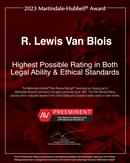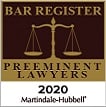Fatalities from distracted driving increased from 2014 to 2015 at a faster rate than any other category attributed to human choices, according to the National Highway Traffic Safety Administration (NHTSA). NHTSA estimated that 3,500 people were killed in crashes involving distracted drivers in the U.S. in 2015. Cell phone distractions resulted in 476 deaths in 2015. However, crashes involving cell phones are vastly under reported because police have to rely on what they are told by the drivers.
Forty-six states have laws against texting while driving. Many states, including California, bar drivers from using handheld cell phones for any activity including talking while driving. However, this problem is getting worse every day. In New York, texting tickets soared from about 9,000 in 2011 to 85,000 tickets in 2015. In California, the number of drivers found to be guilty of texting while driving rose to over 31,000 in 2015.
California Vehicle Code sections 23123, 23123.5 and 23124 make it illegal to drive while holding and operating a handheld wireless telephone or electronic communications device. Persons under the age of 18 cannot drive while using a wireless telephone or an electronic wireless communication device even if equipped with a hands-free device (C.V.C. §23124). Research has consistently shown that hands free devices provide no significant safety benefit because it does not eliminate the cognitive demand placed on drivers. Multi-tasking result in each task receiving less attention.
Device and app designers are being sued in distracted driving cases. Many of these cases have been dismissed by courts because of a lack of foreseeability of drivers using cell phones and causing crashes. With the proliferation of these devices resulting in significantly increased danger of accidents, courts may look at foreseeability and causation issues differently.
Recently Apple has been sued in San Jose for being a cause of the death of a 20 year old man for not installing technology that could prevent crashes caused by distracted drivers who lack the self-control to stop toying with their phones while driving. Analysts claim Apple and other smart phone manufacturers could add technology that shuts off text messaging and other distracted features while driving. This should not be optional to the user. The judge in the San Jose case ruled there was not a sufficiently close connection between Apple’s conduct and the plaintiff’s injuries.
Legal cases are also being filed against people who facilitate the drivers texting or app use. A court in New Jersey reasoned that the “remote texter” owed a duty to those injured if he or she knew, when sending the text, that the recipient was driving and would continue to drive while reading the text. Telephone records can supply the proof for this result.
We will likely see more cases brought against remote texters, cell phone manufacturers and service provider. The CEO of the National Safety Council stated that all of the device companies have to address their responsibilities to make driving safer. Courts may allow juries to decide cases at trial because of the continuing increase of distracted driver crashes.






















